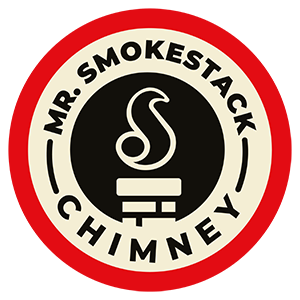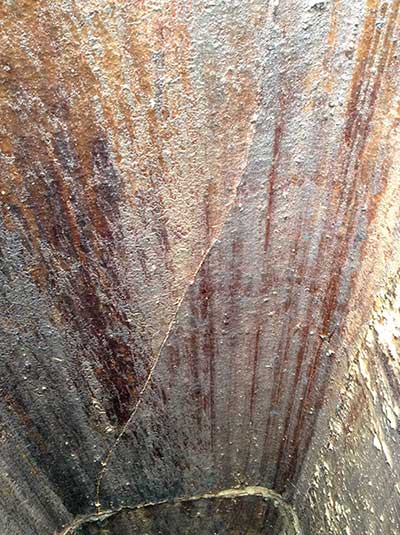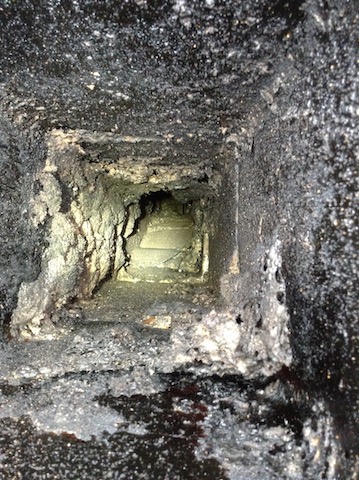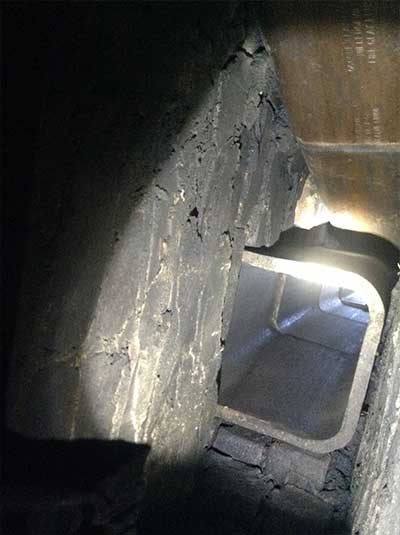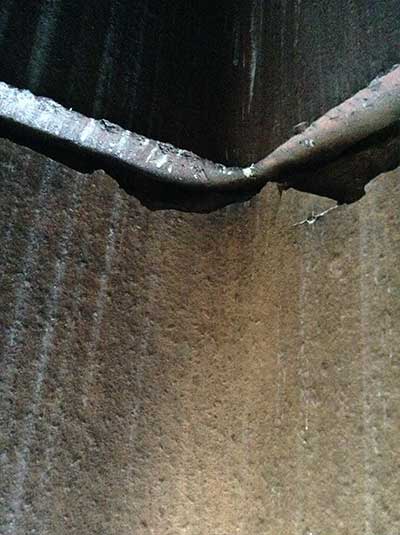Count on Mr. Smokestack Chimney Service for Your Annual Chimney & Fireplace Inspection: We Serve Raleigh, Durham, Greensboro & More
Chimney and fireplace inspections are the most important services we provide at Mr. Smokestack Chimney Service. Each year, chimney fires cause massive devastation to homes, resulting in injuries and death. For safer and more efficient operation, it is critical that your chimney, fireplace, and vents are inspected annually. You should also have your chimney inspected whenever you transfer ownership of a property. A proper chimney inspection will reveal any problems that might make your chimney unsuitable to use.
Homeowners in Broadway, Greensboro, and Raleigh can trust the crew at Mr. Smokestack Chimney Service for their yearly chimney inspection. We’ve provided customers with peace of mind for close to 20 years!
Schedule an appointment with us before the burning season kicks into full swing each year, so you can rest assured that your chimney is safe and ready to use. Call us at 919-747-1859 or book with us online.
What Is a Chimney Inspection?
A chimney inspection is a thorough examination of a chimney and fireplace. A chimney technician will assess all parts of the chimney system for structural integrity, safety, and functionality. The primary goal of a chimney inspection is to find any potential issues or hazards that could compromise your chimney and potentially lead to safety concerns or reduced efficiency.
And if problems arise? Count on us – we’re your full service chimney service provider.
Who Inspects Chimneys?
Technically, anyone can inspect your chimney – though, that doesn’t mean just anyone should. What do we mean? Well, the chimney industry isn’t overseen by a federal organization, so anybody can call themselves a chimney professional and offer to do the job.
…not that most comforting thought, right? It’s scary to think that someone who doesn’t know much about chimneys can claim otherwise and welcome themselves into your home.
The good news is that there are lots of chimney techs that do care about doing the job right – and doing it well. How does one find them? There are organizations in place to protect homeowners and train chimney technicians, ensuring they’re able to serve areas with integrity, knowledge, and experience.
Mr. Smokestack Chimney Service’s chimney technicians are all certified by the Chimney Safety Institute of America (CSIA) and we’re members of the National Chimney Sweep Guild (NCSG). We’re all highly experienced, proudly serving Broadway, Raleigh, and nearby towns since 2006. When you choose to work with us, you can be confident that you’re getting chimney services from a qualified and vetted team.
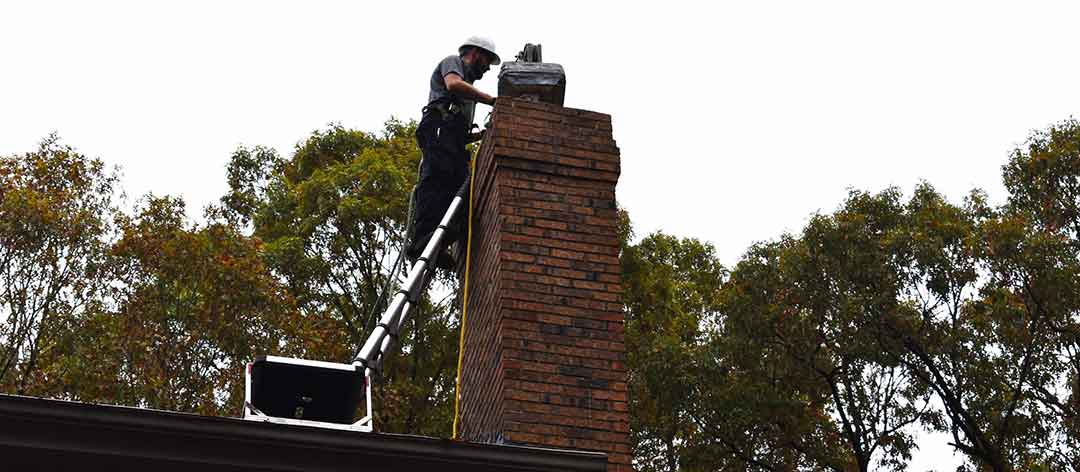
Why Do I Need a Chimney Inspection?
A lot of chimney issues can be missed if not examined by a trained professional. Did you know that most homeowners don’t even know that they’ve had a chimney fire until an inspection reveals damage?
An annual checkup is a chance for a chimney technician to get a close-up look at your chimney system. It’s an opportunity to take care of soot and creosote buildup, repair cracks, remove blockages, and confirm that your chimney is safe – or not – to use.
At Mr. Smokestack Chimney Service, we take our chimney inspections very seriously. We use video equipment to conduct a thorough inspection of the inside of your chimney, allowing us to see parts of the chimney that may not be visible in a standard inspection. We use our special camera to record images in the chimney flue. Some common things that a video inspection may uncover include:
- Flue pipe cracks
- Damage caused by chimney fires
- Obstructions in the flue
- Broken or missing flue pipe sections
- Missing mortar or gaps in flue sections
- Hidden breaches (gaps) in the chimney
Cracks in the Flue Pipe
Damage Caused by Chimney Fire
Broken or Missing Flue Pipe Sections
Hidden Breaches in the Chimney
What Are the Parts of My Chimney?
Chimneys and fireplaces are much more than meets the eye – they are intricate structures that have various parts, all of which function cohesively as an interconnected system. For your chimney to function properly, each part has to do its job. Getting to know the different parts of your chimney and understanding how it functions will shed more light on why it’s so important to have your chimney inspected regularly.
- Brick & Mortar: Masonry fireplaces are among the most common in homes. The exterior of these chimneys is made of brick held together by mortar, a bonding agent made of Portland cement and sand. Brick and mortar is exposed to the elements of nature and can deteriorate over time, especially when not properly waterproofed.
- Chimney Cap: The chimney cap sits at the top of the chimney. Its main purpose is to protect the flue from water damage by stopping rain and debris from getting in. Most caps feature a metal top and mesh sides to stop wildlife from moving in, while still allowing smoke and fumes a pathway out.
- Chase Cover: A chase cover is similar to a crown, except it’s (usually) intended for prefabricated chimneys (units built off-site and then installed later). It acts as a barrier to rain, snow, animals, and debris from entering the flue. Rusting is an issue to watch for with chase covers – especially units that are new from the factory. It’s not uncommon for an inferior metal to be used to cut back on building costs, so you will likely need a replacement at some point.
- Chimney Crown: The chimney crown is a concrete slab that sits just below the chimney cap. It helps preserve brick and mortar by deflecting rain and snow away from the sides of the chimney. In the past, crowns were often made with mortar, which doesn’t hold up as well as concrete. If you have an older home, you may have had to deal with cracks in the crown. We can either seal cracks or replace the crown with a more reliable upgrade.
- Chimney Damper: Smoke has to clear your chimney when your fireplace is in use, but you don’t want to leave your chimney open all the time. That’s where the damper comes in. You can control the airflow within your home by opening or closing the damper, then shut it tight when your fireplace isn’t in use.
- Flue/Chimney Liner: A chimney flue liner runs the length of your chimney from the firebox (where the fire burns) to the opening of the chimney. It offer a pathway for smoke to exit your home, while protecting the masonry or steel structure from damage caused by heat and toxins. Flue liners are typically clay tile or steel. Older homes may not have a flue, but Mr. Smokestack Chimney Service can install one.
- Firebox: The firebox is the most visible part of your chimney, as it’s where the fire burns. It should be made from fire-resistant materials like firebrick and refractory panels – both of which can withstand intense heat. Cracks in the firebox can make you more vulnerable to experiencing a fire or a carbon monoxide leak.
- Chimney/Roof Flashing: The area where your roof and chimney meet is hard to seal because they are made from different materials. This makes this spot much more prone to water damage. Flashing consists of strategically layered sheets of metal that create a water-tight boundary.
- Smoke Chamber: The smoke chamber is located just above the damper and connects the firebox to the flue. It’s shaped like an upside-down triangle. it allows smoke to move into the chimney or it would back up into your living space.
More than you were expecting? You can see why it takes the knowledge and eyes of a trained professional to look at each component and examine if it’s in good shape. Don’t hesitate to count on our techs for all of your chimney and fireplace needs. Call or book online now.
How Do I Know If My Chimney Is Safe To Use?
It’s tough to say whether or not your chimney is safe without an inspection. Some chimney problems – like chipping or cracked brick – are easy to spot, but as we said above, most damage isn’t clearly visible. The chimney professionals at Mr. Smokestack Chimney Service are here to take the guesswork out of the equation. We’re here to keep the chimneys of Broadway and Raleigh safe and ready to use.
Give us a call at 919-747-1859 or book online to learn more or schedule an appointment today.
What Types of Chimney Inspections Are There?
Mr. Smokestack Chimney Service offers three levels of chimney inspections, as outlined by the CSIA and the National Fire Protection Association (NFPA).
Level 1 Chimney Inspection
This is the most common type of chimney inspection. It is recommended when there haven’t been any changes to the chimney system or signs of problems. This level of inspection is typically conducted as part of routine annual maintenance for fireplaces and chimneys that are in regular or infrequent use.
What happens during a level 1 inspection? Here’s what to expect:
- The chimney technician examines the readily accessible portions of the chimney and fireplace.
- The interior of the chimney is inspected using a flashlight and video equipment to look for any signs of damage, deterioration, or buildup.
- This inspection level does not require any special tools or access to hidden areas of the chimney.
Level 2 Chimney Inspection
This is a more in-depth assessment of your chimney system and is recommended under certain circumstances, such as when there have been changes to the chimney system, when the property is being sold, or after there’s been an event that could have caused damage to the chimney, like a natural disaster, lightning strike, or chimney fire.
This level includes everything in a Level 1 inspection but adds the following:
- The inspector examines all accessible portions of the chimney, including those that might require special tools or access, such as attics, crawl spaces, and basements.
- Video scanning technology will be used to inspect the interior of the chimney for a more thorough assessment of its condition.
Level 3 Chimney Inspection
A Level 3 inspection is the most comprehensive. It includes all the requirements of Level 1 and 2 inspections, plus examination of the concealed areas to investigate known or suspected problems. A Level 3 inspection is suggested when there is reason to believe that a serious issue exists beyond the walls of the system. It may require removing components of the chimney or building structure to access hidden areas – and may even call for some demolition work.
How Often Should I Have My Chimney Inspected?
For best practices, you shouldn’t go more than a year without a chimney inspection, as recommended by CSIA and the NFPA. You should consider adding on an additional inspection if you use your fireplace a lot.
It might sound excessive, but your chimney system is delicate and a great number of things can go wrong within the course of a year. Your chimney may have been in good shape last burn season, but a year is ample time for a family of raccoons to set up shop. Or the flashing may be damaged, and the next thing you know, you have a leaky ceiling on your hands.
An annual inspection is the best way to save you time and money in the future. Remember – you’re lighting a fire in the middle of your home!
What if I don’t use my chimney?
We hear this question often – yes, you should still have your chimney inspected once a year even if you don’t use it. Just because you don’t light fires doesn’t mean there aren’t things happening within your chimney system.
Wear and tear is always a factor and animals love to hide away in chimneys. Or let’s say there’s a crack in your chimney cap or it was knocked off during a storm. In this case, your chimney would be wide open to rain, snow, critters, and all sorts of unpleasant things and you’d have no idea. This is a problem we can identify and fix during an inspection.
How Do I Prepare for a Chimney Inspection?
There are a few things that you can do to prepare for a chimney inspection before the technician arrives. If you have any questions or have noticed specific changes in your fireplace’s performance, feel free to write them down, so that the technician can address them.
- If you have furniture or tapestries near the fireplace, move them about 8 feet away from the fireplace so that there’s enough space to work with.
- Store away any keepsakes or other items on the mantel.
- If you have a family pet, make sure they’re secured – we don’t mind pets, but we want to make sure they are safe.
- It’s also important that the chimney be cooled for at least 24 hours before we start, so don’t make a fire during this period.
What Happens if Issues Are Found During the Inspection?
It’s not ideal, but sometimes we do find problems during an inspection. If that happens, the chimney technician will document the issue and advise you of the severity of the problem, as some things can wait a bit to be fixed, but others – like a dangerous level of creosote buildup – need to be addressed quickly. At that point, the technician will go over repair options and costs with you and make a plan. If necessary, we will schedule a follow-up appointment for a later date to complete the repairs.
How Much Does a Chimney Inspection Cost?
The cost of a chimney inspection can vary depending on the size of your chimney, its current state, and the level of inspection needed. The easiest way to get an idea of the cost is to reach out to us and give one of our customer service representatives a little more information about your chimney setup and any concerns you may have. Until then, we don’t really want to give out numbers, in case we give you inaccurate info.
Call us at 919-747-1859 or get in touch with us online. Our team is standing by and ready to help!
Can I Do a Chimney Inspection Myself?
While we understand the inclination, we don’t recommend inspecting your chimney on your own – unless, of course, you’re CSIA-certified! If you don’t have experience with chimneys, you may overlook a potential hazard that a skilled professional is trained to find. Here at Mr. Smokestack, our technicians go through intensive training before they are certified, so rest assured that we know exactly what to look for and what areas need to be examined more closely.
Our team has nearly 20 years of experience inspecting chimneys and fireplaces of all kinds. Chimney inspections are dirty work, but it’s what we do best. Let us take on the task so you don’t have to!
When Is the Best Time to Book My Chimney Inspection?
We do chimney inspections year-round, but it’s best to schedule an appointment in the spring and summer months. Why? That gives us plenty of time to check out your chimney and address any repairs well before the burning season begins.
It’s also harder to book as the fall approaches, as schedules tend to get full and busy – for us and homeowners. So, if you end up needing a follow-up appointment (or two) for repairs, you may have to wait awhile before we can get you squared away. We don’t want you to lose out on time with your fireplace! You have a better chance of securing your preferred appointment time if you schedule earlier.
Schedule Your Annual Chimney Inspection With Us Today
When it’s time for your yearly chimney inspection, trust the team at Mr. Smokestack for a job done right. Our experts are here to help you and provide quality chimney services to residents in Broadway and Raleigh. Give us a call now at 919-747-1859 or schedule an appointment online. We’re the best chimney service provider in town and we can’t wait to show you why!
Our chimney and vent services include all kinds of fixes, including chimney and fireplace repairs.
